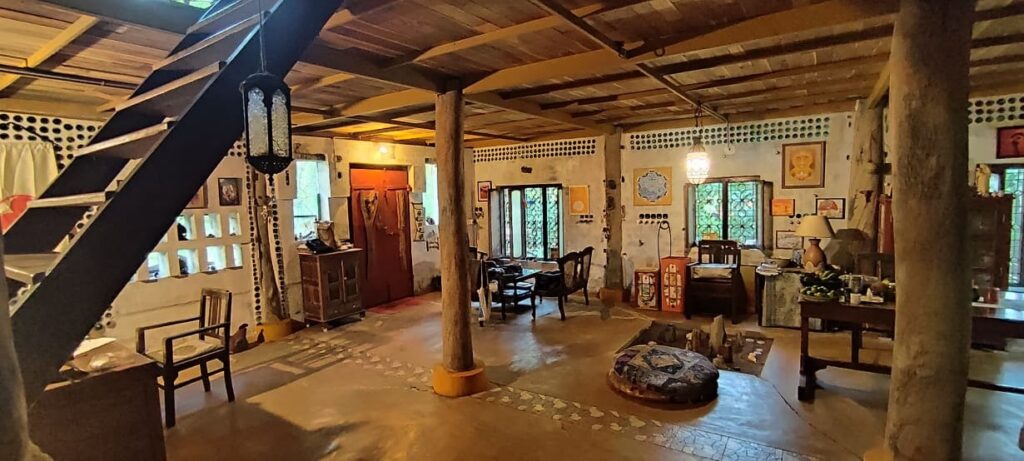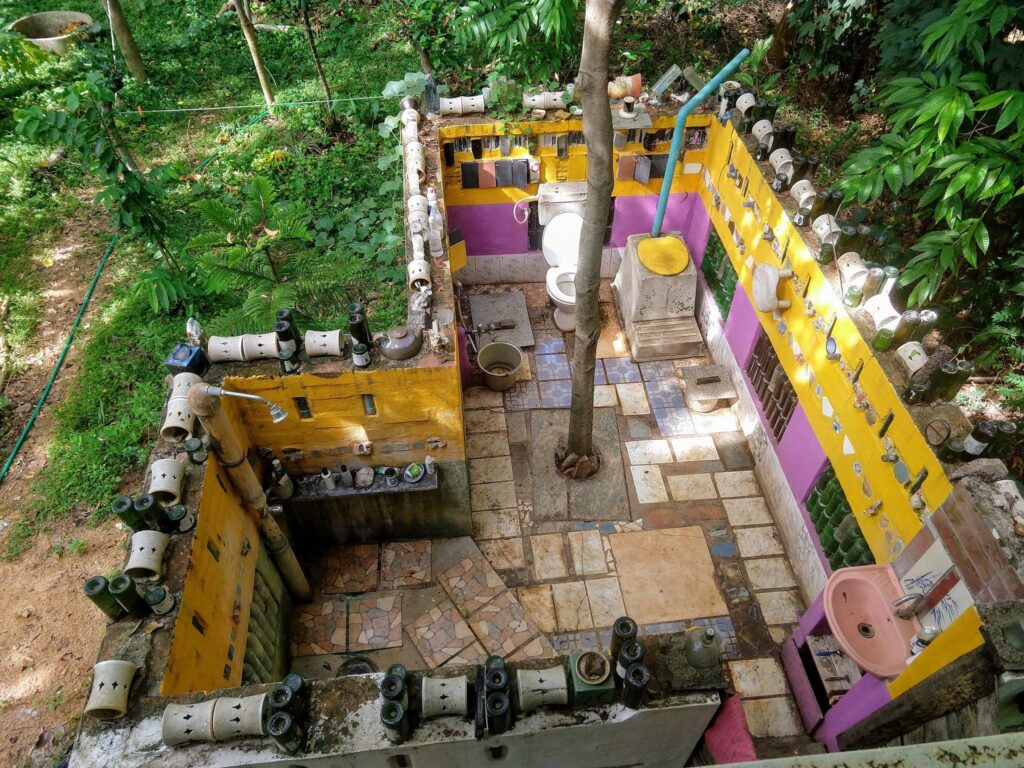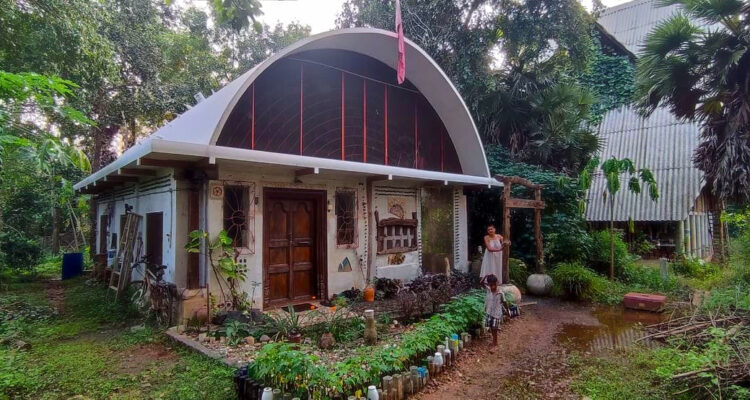Where everything is zero waste and upcycled.
◊ By Deepa. Photos by Naresh.
Visit ORGANIC SHOP by Pure & Eco India
I’ve been residing in a house fondly known as ‘Trash Mahal’ for the last 3.5 months, which is based on the zero waste principle.
Everything that could be found nearby was foraged and hoarded for 2 years to build this house, which took one year to construct. The thumb rule that a house can be built by anything around you, holds true for this home.
Foundation
A big hole was dug and filled with landfill stuff and then sealed shut. The sealed down floor is covered with a cement mix, which includes yellow oxide.

Waterproof Roof
Two frames of steel were made, which make up the back and front of the top floor. These are connected with strong rods to hold them up and welded together to form a cage-like structure. Then, wire mesh rolls have been rolled over on the cage to cover the gaps. From inside, thick ‘tetra pack’ (compressed, crushed and ground tetra packs) sheets (1/2 inch) have been spread under the cage to create a tetra pack roof. Then, cement was sprayed from outside (from the top of the roof) to bind the structure and create a shell. A mason went on top to spread the cement homogeneously, especially in the corners.
Walls
CEB (Compressed Earth Blocks) were used to make the walls of the first floor. These were all rejects from a plant and were being thrown away, perfect for a house like this!
Ventilation
There are no air conditioners but two exhaust fans in the roof, which run on wind or the hot air rising from the house spins them and moves out.
Top Floor Board
Many trees had fallen, which were sawed to make pillars, a small ladder to the top floor and the top floor base.
Roofless Bathroom
A roofless outdoor bathroom lies behind the house. The water from the sink and shower goes to the garden. There are 3 toilets: dry compost, pour flush western toilet and pour flush squat toilet. The water from these goes to a septic tank at the edge of the garden. This tank would only be full in 30 years or so as the dry toilet is mostly used.

Humanure Composting
The dry toilet, when it’s full of faeces and sand dust, is emptied into a big cement ring in the garden. The base of this pit is soil and the hole is covered with leaves. Thus it composts really fast.
Electricity
The whole house is running on solar energy, including the fridge.
Miscellaneous
Many useless items (aka trash) are stuck in the wall and floor, such as video cassettes, glass bottles, pottery items, etc. There is even a potter garden made with broken pottery.
The author is a Sustainable Lifestyle Coach and Founder of the Facebook group, ‘Zero Waste Lifestyle-India’.



Brilliant work,
[…] I met B (who used to be Bill, but took the “ill” out of his name), living in his “trash mahal“. There was also Jonny, an Aussie ex-pat living on the land and hosting a famous Sunday […]